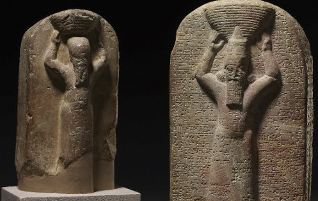Welcome to International Voices in Biblical Studies (Online ISSN 1949-8411), an online, peer reviewed, open-access book series that provides a platform for biblical critics and authors particularly from Africa, Asia, Latin America, the Caribbean, the Pacific, and Eastern Europe.The series will publish scholarly, creative, and compelling works that engage the biblical text, its history, reception, and interpretation. Works could be traditional or experimental in method and perspective, but with serious attention to context, be it local, regional or global. Submissions in local vernaculars will also be considered. Whenever possible, the works will be published in English and the primary language of the author.
The SBL Press IVBS editorial board is led by series editor Jione Havea (Independent Scholar) and includes the following members:
Jin Young Choi, Colgate Rochester Crozer Divinity School
Emily Colgan, Trinity Theological College
Musa Dube, University of Botswana
Julián Andrés González, Pacific Lutheran Theological Seminary
David Joy, Union Theological College (Bangalore)
Gerald O. West, University of KwaZulu-Natal
Welcoming the Nations: International Sociorhetorical Explorations Edited by Vernon K. Robbins and Roy R. Jeal, 2020 | Download | Paperback | Hardcover |
Reading Ecclesiastes from Asia and Pasifika Edited by Jione Havea and Peter H. W. Lau, 2020 | Download | Paperback | Hardcover |
Stories of Minjung Theology: The Theological Journey of Ahn Byung-Mu in His Own Words Ahn Byung-Mu; Translated by In Hanna and Park Wongi , 2019 | Download | Paperback | Hardcover |
Landscapes of Korean and Korean American Biblical Interpretation Edited by John Ahn, 2019 | Download | Paperback | Hardcover |
A Filipino Resistance Reading of Joshua 1:1–9 By Lily Fetalsana-Apura, 2019 | Download | Paperback | Hardcover |
A Samoan Reading of Discipleship in Matthew By Vaitusi Nofoaiga, 2017 | Download | Paperback | Hardcover |
Reading Ruth in Asia edited by Jione Havea and Peter H. W. Lau, 2015 | Download | Paperback | Hardcover |
Migration and Diaspora: Exegetical Voices of Women in Northeast Asian Countries Hisako Kinukawa, 2014 | Download | Paperback | Hardcover |
| Zer Rimonim: Studies in Biblical Literature and Jewish Exegesis Michael Avioz, 2013 | Download | Paperback | Hardcover |
| Women at Work in the Deuteronomistic History Mercedes L. García Bachmann, 2013 | Download | Paperback | Hardcover |
| The Old Testament and Christian Spirituality: Theoretical and Practical Essays from a South African Perspective Christo Lombaard, 2012 | Download | Paperback | |
| Reading Ezra 9–10 Tu’a-Wise: Rethinking Biblical Interpretation in Oceania Nasili Vaka’uta, 2011 | Download | Paperback | |
| Global Hermeneutics? Reflections and Consequences Knut Holter and Louis Jonker, 2010 | Download | Paperback |











